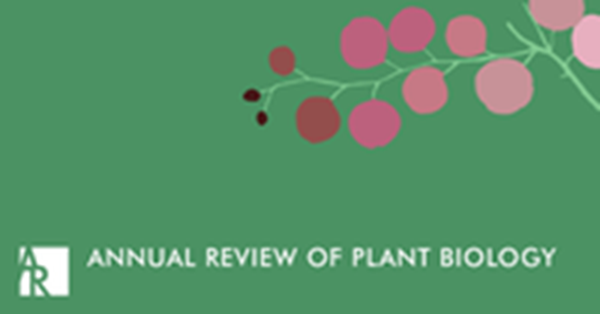植物U-Box蛋白质的进化和功能:从蛋白质质量控制到信号传导。
IF 21.3
1区 生物学
Q1 PLANT SCIENCES
引用次数: 13
摘要
翻译后修饰增加了细胞蛋白质组的复杂性和多样性。在真核生物中最普遍的修饰之一是泛素化,它是由E3泛素连接酶协调的。含U-box的E3连接酶已在植物界大规模扩展,并已多样化为植物U-box蛋白(PUBs)。PUBs可能起源于两种或三种祖先形式,与不同的功能亚结构域融合,导致新功能化。它们的出现和多样化可能反映了植物进化过程中对压力的适应,反映了植物蛋白质组维持细胞稳态需求的变化。通过与蛋白激酶的紧密结合,它们与细胞信号中枢物理连接,并通过与E2泛素偶联酶动态配对来激活反馈回路,从而产生不同的泛素聚合物,这些聚合物本身充当信号。在这里,我们用比较基因组学补充现有知识,以更深入地了解PUB的功能,重点关注它们的进化和关键U型盒残基的结构适应,以及它们在植物细胞中的各种作用。《植物生物学年度评论》第73卷预计最终在线出版日期为2022年5月。请参阅http://www.annualreviews.org/page/journal/pubdates用于修订估算。本文章由计算机程序翻译,如有差异,请以英文原文为准。
Evolution and Functions of Plant U-Box Proteins: From Protein Quality Control to Signaling.
Posttranslational modifications add complexity and diversity to cellular proteomes. One of the most prevalent modifications across eukaryotes is ubiquitination, which is orchestrated by E3 ubiquitin ligases. U-box-containing E3 ligases have massively expanded in the plant kingdom and have diversified into plant U-box proteins (PUBs). PUBs likely originated from two or three ancestral forms, fusing with diverse functional subdomains that resulted in neofunctionalization. Their emergence and diversification may reflect adaptations to stress during plant evolution, reflecting changes in the needs of plant proteomes to maintain cellular homeostasis. Through their close association with protein kinases, they are physically linked to cell signaling hubs and activate feedback loops by dynamically pairing with E2-ubiquitin-conjugating enzymes to generate distinct ubiquitin polymers that themselves act as signals. Here, we complement current knowledge with comparative genomics to gain a deeper understanding of PUB function, focusing on their evolution and structural adaptations of key U-box residues, as well as their various roles in plant cells. Expected final online publication date for the Annual Review of Plant Biology, Volume 73 is May 2022. Please see http://www.annualreviews.org/page/journal/pubdates for revised estimates.
求助全文
通过发布文献求助,成功后即可免费获取论文全文。
去求助
来源期刊

Annual review of plant biology
生物-植物科学
CiteScore
40.40
自引率
0.40%
发文量
29
期刊介绍:
The Annual Review of Plant Biology is a peer-reviewed scientific journal published by Annual Reviews. It has been in publication since 1950 and covers significant developments in the field of plant biology, including biochemistry and biosynthesis, genetics, genomics and molecular biology, cell differentiation, tissue, organ and whole plant events, acclimation and adaptation, and methods and model organisms. The current volume of this journal has been converted from gated to open access through Annual Reviews' Subscribe to Open program, with all articles published under a CC BY license.
 求助内容:
求助内容: 应助结果提醒方式:
应助结果提醒方式:


